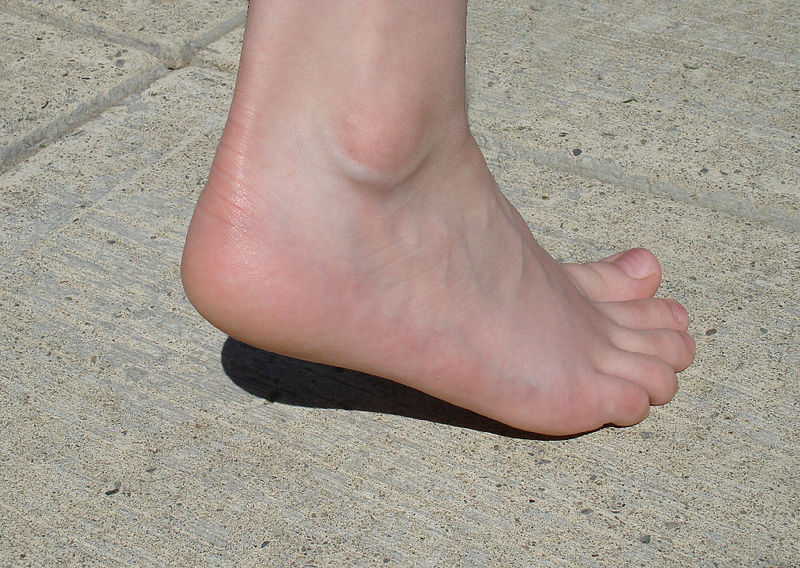The alarm goes off and, in your hurry, to enjoy another day you jump to your feet only to wince at the sharp stabbing pain in the bottom of your heel. If you’ve had this happen you might be dealing with plantar fasciitis. The symptoms are most intense during your first steps after getting out of bed or after long periods of sitting. You may have less stiffness and pain after you take a few steps. But your foot may hurt more as the day goes on. This is one of the more common injuries I have noticed with clients and in particular older athletes.
Plantar fasciitis is the most common cause of heel pain in the United States with more than 2 million people per year seeking treatment. The plantar fascia is a layer of tough connective tissue that covers the bottom of the foot. Plantar fasciitis is a painful inflammation in this tissue that can be quite debilitating. The Achilles tendon is what attaches the calf muscles to the heel bone. From here the plantar fascia forms an extension of the Achilles tendon onto the bottom of the foot. If the plantar fascia is strained, it gets weak, swollen and inflamed. This causes the heel or bottom of the foot to hurt when standing or walking. Another common injury is PTTD. The posterior tibial tendon serves as one of the major supporting structures of the foot, helping it to function while walking. Posterior tibial tendon dysfunction (PTTD) is a condition caused by changes in the tendon, impairing its ability to support the arch. This results in flattening of the foot. Both injuries are caused from the foot inverting and both respond to similar exercises. PTTD is often called adult acquired flatfoot. Although this condition typically occurs in only one foot (usually our dominant side from putting more weight on it), some people may develop it in both feet. PTTD is usually progressive, which means it will keep getting worse if not treated properly. Exercise is important!
Causes
Overuse of the posterior tibial tendon is often the cause of PTTD. In fact, the symptoms usually occur after activities that involve the tendon, such as running, walking, hiking or climbing stairs or dynamic movement in sports such as pickleball. The quick stop and start movements create extra force on the foot.
The symptoms of PTTD may include pain, swelling, a flattening of the arch and an inward rolling of the ankle. There is often increased pain around the medial maleolus because the tendon is located at the back of the leg and passes underneath the inside knob of the ankle bone. For example, when PTTD initially develops, there is pain on the inside of the foot and ankle (along the course of the tendon). In addition, the area may be red, warm, and swollen. Later, as the arch begins to flatten, there may still be pain on the inside of the foot and ankle. But at this point, the foot and toes begin to turn outward and the ankle rolls inward. As PTTD becomes more advanced, the arch continues to flatten and the pain often shifts to the outside of the foot, below the ankle. At this point, the tendon has deteriorated considerably, and arthritis often develops in the foot. In more severe cases, arthritis may also develop in the ankle.
Plantar fasciitis and PTTD are common injuries in older adults yet they are also starting to pop up more in the younger generation who are on their feet for long periods of time on hard surfaces. Risk factors include flat feet, high arches, tight Achilles tendon or calf muscles, obesity, prolonged standing or walking, and poor-fitting shoes. Ignoring pain may result in chronic heel pain.
If you think you may have plantar fasciitis or PTTD, it is important to see your physician for a diagnosis. Usually no tests are necessary to diagnose either injury. The diagnosis is made based on history and physical examination.
Treatment
The treatment for plantar fasciitis and PTTD is very similar. It is important to cut back on activities that make your foot hurt and to avoid standing for prolonged periods on hard surfaces. Now is the perfect time for rest! Stretching and strengthening can also provide symptom relief and speed up recovery time. To reduce pain and swelling try the ice bottle massage. This application technique has the added benefit of gently massaging the tissue on the bottom of your foot while icing it. The ice-bottle massage can provide a gentle stretch to your plantar fascia, which may help to improve overall mobility in your arch and foot. Make certain to drink half of the bottle before you freeze. Slowly roll your painful foot over the frozen water bottle, paying attention to cranky areas. You can perform the ice bottle massage for 10-15 minutes several times a day.
Many people feel great relief from arch supports or orthotics which help distribute pressure to your feet evenly. This doesn’t have to be expensive. There are likely many plantar fasciitis inserts available at your local drug store.
Plantar Fasciitis and PTTD most often occur because of stress in your foot that has occurred over time. With treatment, you will have less pain within a few weeks. But it may take time for the pain to go away completely. It may take a few months to a year to become pain free. Your doctor may recommend splints that you wear at night, steroid shots in your heel, or other treatments. Night splints, worn while patients are sleeping helps to prevent the foot from resting in a plantar-flexed or toe pointed position which shortens the calf and Achilles. Splinting increases calf and plantar muscle flexibility and reduces tension on the plantar fascia. When we sleep, we tend to point our feet which shortens the affected muscles. This is part of the reason the first few steps are so painful.
A creative strategy to help reduce morning foot pain is to buy an inexpensive pair of foam flip flops. Cut the heel from the flip flop on the non affected side. Tape the heel on top of the heel of the flip flop on your affected side. Keep this sandal by your bed and slide it on when you get up. During the night, your foot was producing scar tissue to help repair the damage. When we stand and place weight on the foot the scar tissue can tear. Wearing the sandal for your first few steps will help relieve pain and encourage heeling.
Another creative strategy is buying the spacers you use for painting toenails as in the photo above. There are silicone toe spacers available at drug stores as well that you can wear while exercising. Restoring the big toe to its normal position relieves the tension increasing blood flow which allows the body to wash dead tissue away. And remember to look for shoes with a wide toe box for healthy feet.
Restorative Exercises
The easiest way to get started on strengthening the small muscles of the foot is to kick off your shoes. Toe exercises are easy and fun! Pick up marbles with your toes and place them in a jar. Spread your toes as wide as possible as often as possible. Perform these types of exercises as often as you can. Press your toes into the floor and then see if you can lift and lower your big toe. Our feet are meant to move and not to be stuck in one position in our shoes all day.
Foot Stretch: Slide your foot under your chair with the toes tucked to lengthen the top of the foot and ankle. Hold for 10-30 seconds. Or, if your knees allow sit with your toes tucked under your bottom as in the picture below.

Achilles and Calf Stretch: Stand on the edge of a stair and lower one heel as far as possible. Hold for 10-30 seconds RPT 10-15x per day.
Foot Exercises: Towel Grab: Place a towel under your heel and scrunch the towel in with your toes.
Toe Tapping: Put on some music and tap your toes as often as possible. The muscles on the front of the leg are much weaker than the muscles on the back of the leg. Strengthening the front of the leg will help reduce tension in the tendons on the back of the leg.






